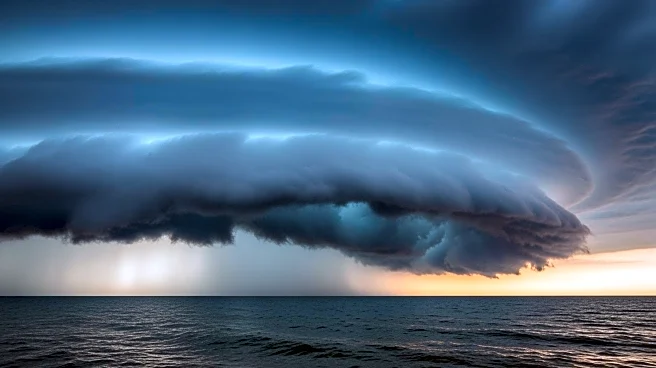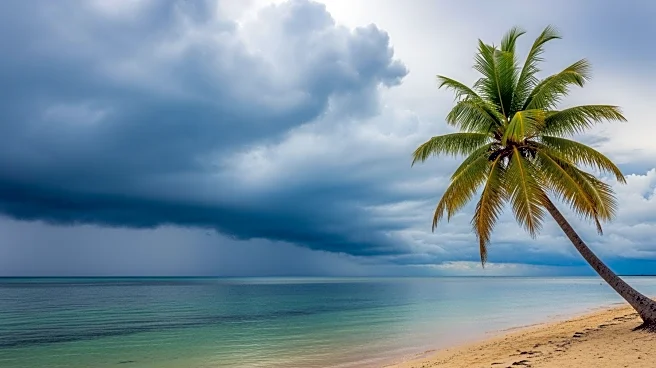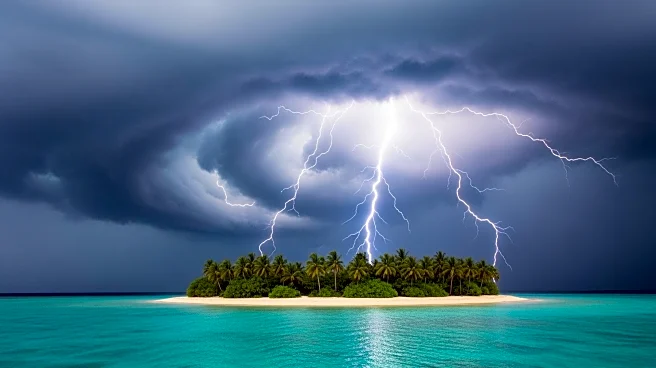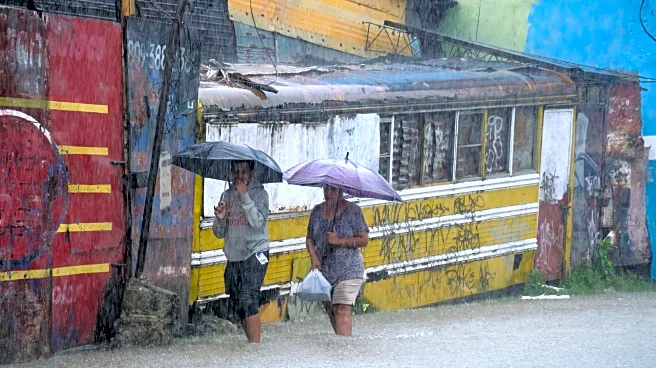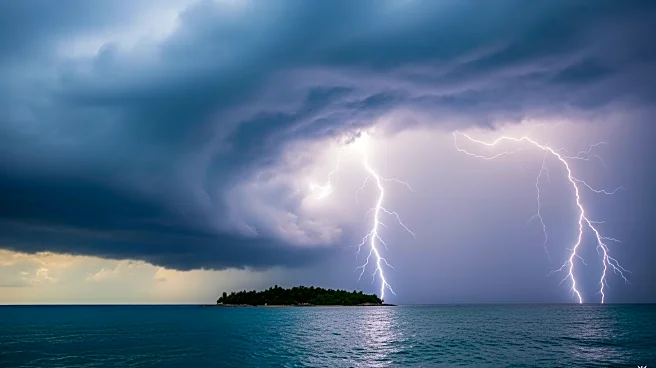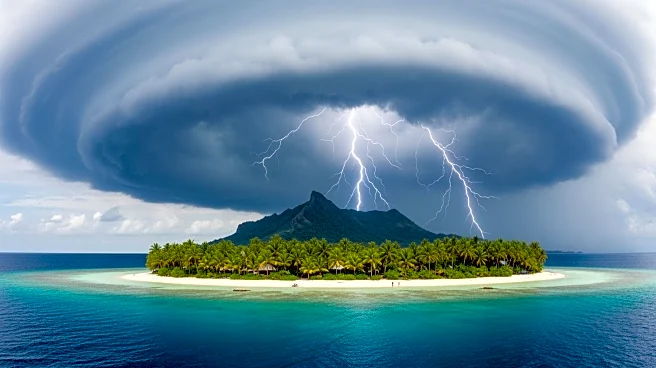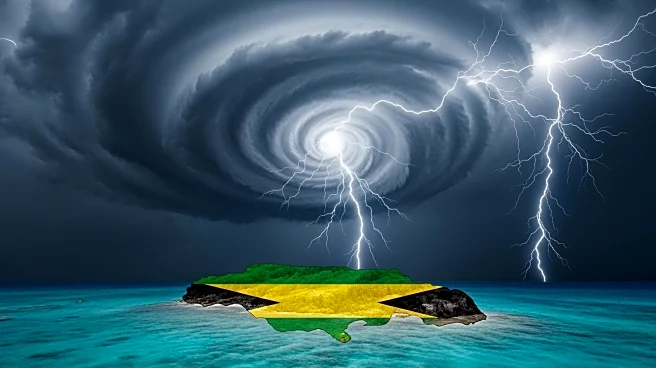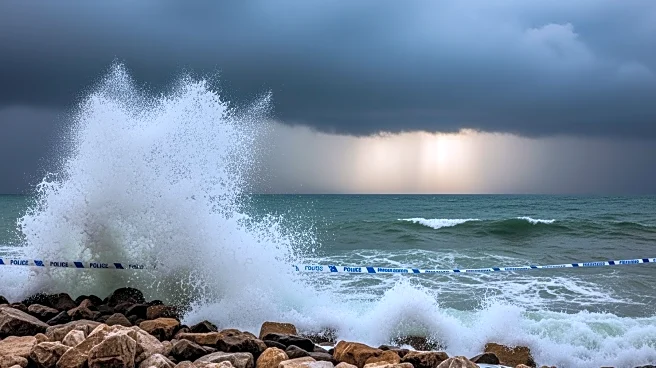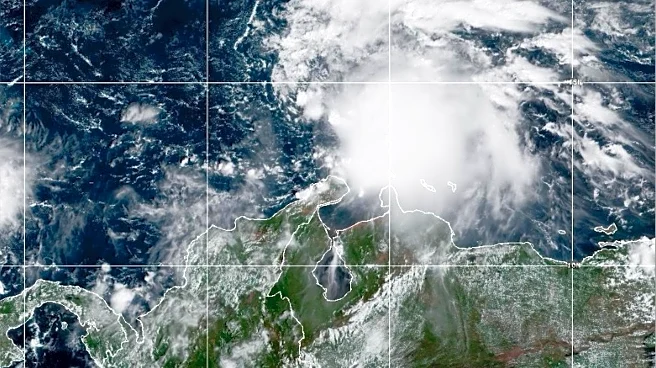What's Happening?
Hurricane Melissa is forecasted to rapidly intensify into a major hurricane, posing a significant threat to the Caribbean region. According to the National Hurricane Center in Miami, the storm is expected
to bring life-threatening flash flooding and landslides to Jamaica and southern Hispaniola, which includes Haiti and the Dominican Republic. As of Saturday evening, Melissa was a category two hurricane with sustained winds of 100 miles per hour, moving slowly at three miles per hour. This slow movement is anticipated to result in prolonged rainfall, exacerbating the risk of catastrophic flooding. A hurricane watch has been issued for Haiti, and a warning is in effect for Jamaica, where officials have urged residents to prepare for potentially severe impacts. The storm is expected to make landfall in Jamaica early next week, with forecasts predicting 15-30 inches of rain, and some areas possibly receiving up to 40 inches.
Why It's Important?
The intensification of Hurricane Melissa poses a severe threat to the Caribbean, with potential widespread destruction due to flooding and landslides. The slow-moving nature of the storm increases the risk of prolonged rainfall, which can lead to significant infrastructure damage, displacement of communities, and loss of life. The U.S. Navy has already taken precautionary measures by evacuating non-essential personnel from Guantanamo Bay, Cuba. The economic impact could be substantial, affecting tourism, agriculture, and local economies in the region. Additionally, the humanitarian implications are significant, as the affected areas may require international aid and support to recover from the storm's aftermath.
What's Next?
As Hurricane Melissa approaches, emergency services and government agencies in the Caribbean are on high alert. Jamaica's National Water Commission has activated emergency protocols to ensure water supply to critical facilities. Residents in the storm's path are being urged to finalize preparations and heed evacuation orders if necessary. The National Hurricane Center continues to monitor the storm's progression, with forecasts indicating potential impacts on eastern Cuba, the Southeast Bahamas, and the Turks and Caicos Islands. The situation remains dynamic, and further updates will be crucial as the storm develops.
